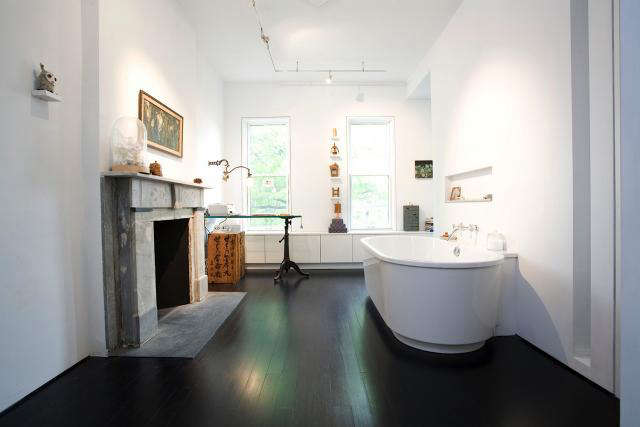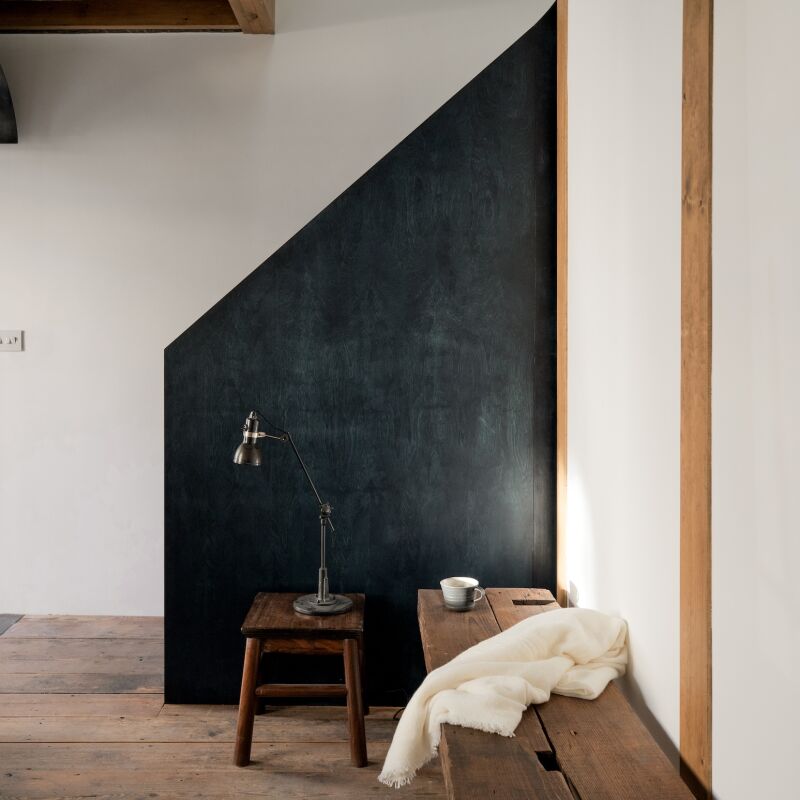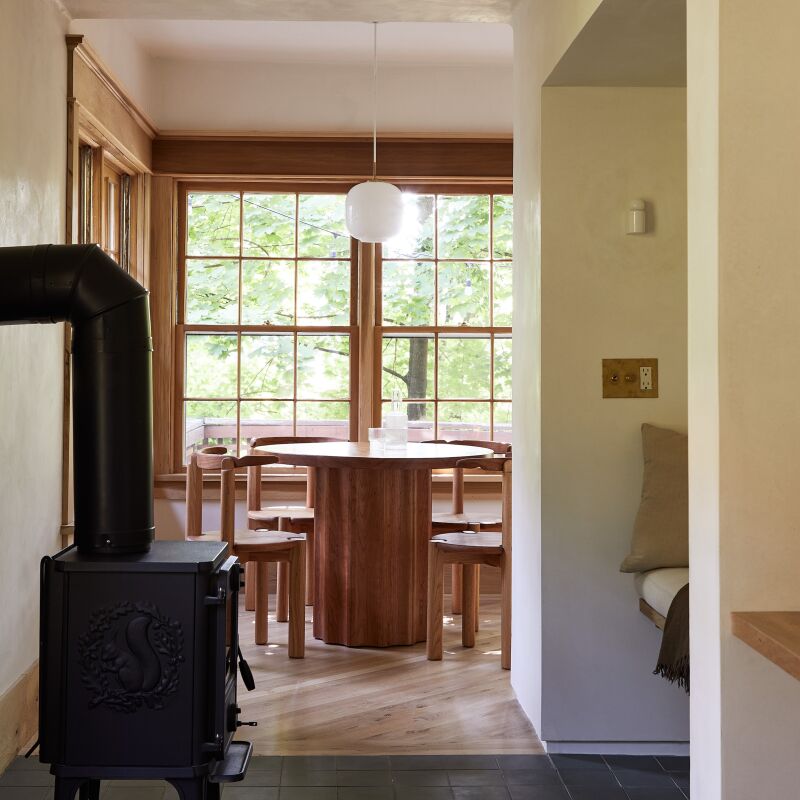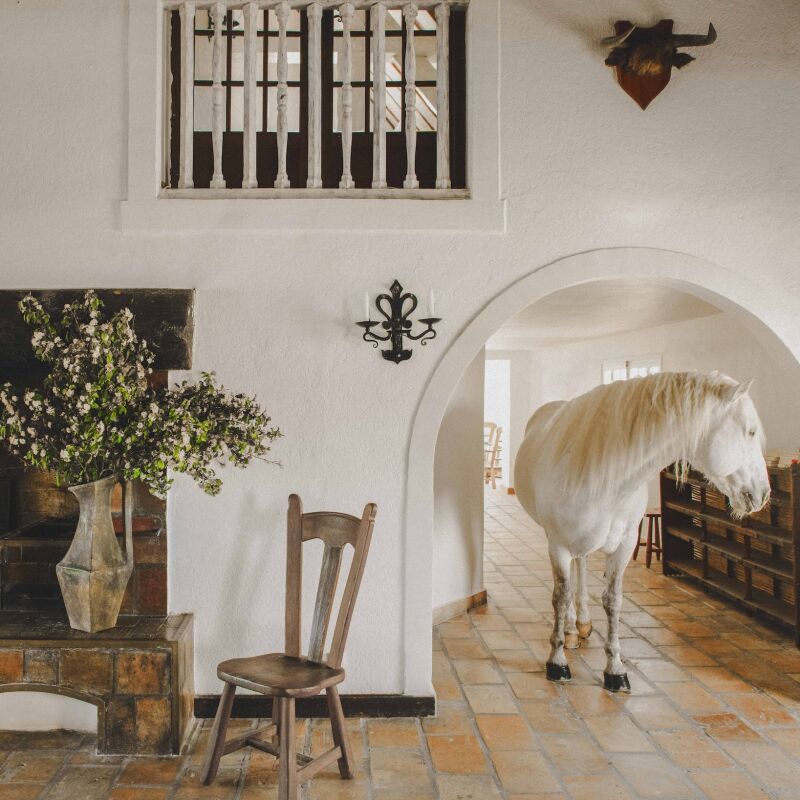When a sculptor wanted to bring more light into her Brooklyn Victorian brownstone, she called on Elizabeth Roberts to help her radically reshape the space without compromising its historical details.
“The woodwork and the narrow width of the house meant it was very dark,” says Roberts, who has a degree in historic preservation and is a member of the Remodelista Architect/Designer Directory. “But my client could see past the darkness and recognized the potential.” The 19th-century Victorian brownstone, located in Prospect Heights, is slightly narrower than the standard size (18 feet vs. 20 feet); Roberts' solution was to connect the front and rear of the house by removing the dividing wall in the middle, essentially creating one open space on each floor. She also reshaped each floor for modern living by inserting storage units-cum-room dividers. And instead of stripping the interior of the original details, Roberts retained elements of the dark woodwork, adapting it in innovative ways for this family of three. The result is a comfortable balance between the old and the new.
N.B. Also see House Call: Elizabeth Roberts in Brooklyn.
Photography by Sean Slattery.

Above: Roberts removed the existing wall between the entry hall and the living room to open the space up and added bookcases that double as seating during parties.

Above: In the kitchen, Roberts adapted an old wardrobe to house the kitchen appliances and tableware.

Above: The open kitchen has a contemporary island in dark wood to match the wardrobe. Robert painted the window trims throughout the house to brighten the space.

Above: In the master bedroom, Roberts took the existing dark-wood mantels to Old Good Things, an architectural salvage shop in Scranton, PA, and came back with simpler marble fireplace surrounds. The master suite, which takes up the whole floor, combines the bedroom area with the master bath.

Above: The master bath features a freestanding tub and a collection of antiques.

Above: The master bathroom sink and toilet are tucked away behind a dividing wall. The floors are bamboo, dyed with aniline.

Above: The stairs leading downstairs to the cellar had very little natural light, so Roberts stripped the floors, whitewashed them and lightened up the wainscoting by painting it a light gray.

Above: An image of the kitchen before its transformation shows the dark Victorian window trim and the wall that separates the room from the hall.

Above: The old wardrobe, before it was repurposed.

Above: An image of the second floor during the renovation shows the walls before they were removed.




Have a Question or Comment About This Post?
Join the conversation